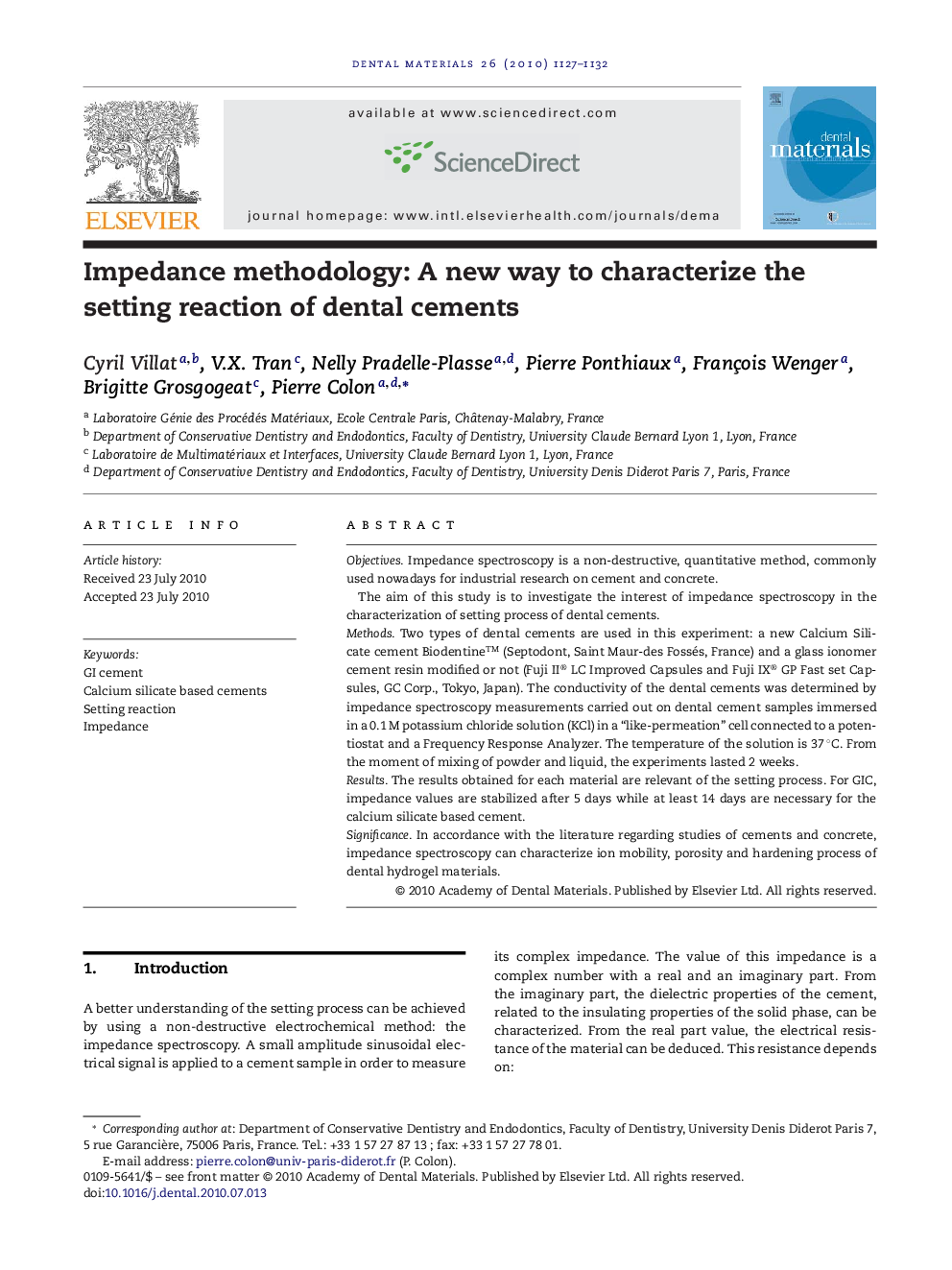| Article ID | Journal | Published Year | Pages | File Type |
|---|---|---|---|---|
| 1421382 | Dental Materials | 2010 | 6 Pages |
ObjectivesImpedance spectroscopy is a non-destructive, quantitative method, commonly used nowadays for industrial research on cement and concrete.The aim of this study is to investigate the interest of impedance spectroscopy in the characterization of setting process of dental cements.MethodsTwo types of dental cements are used in this experiment: a new Calcium Silicate cement Biodentine™ (Septodont, Saint Maur-des Fossés, France) and a glass ionomer cement resin modified or not (Fuji II® LC Improved Capsules and Fuji IX® GP Fast set Capsules, GC Corp., Tokyo, Japan). The conductivity of the dental cements was determined by impedance spectroscopy measurements carried out on dental cement samples immersed in a 0.1 M potassium chloride solution (KCl) in a “like-permeation” cell connected to a potentiostat and a Frequency Response Analyzer. The temperature of the solution is 37 °C. From the moment of mixing of powder and liquid, the experiments lasted 2 weeks.ResultsThe results obtained for each material are relevant of the setting process. For GIC, impedance values are stabilized after 5 days while at least 14 days are necessary for the calcium silicate based cement.SignificanceIn accordance with the literature regarding studies of cements and concrete, impedance spectroscopy can characterize ion mobility, porosity and hardening process of dental hydrogel materials.
